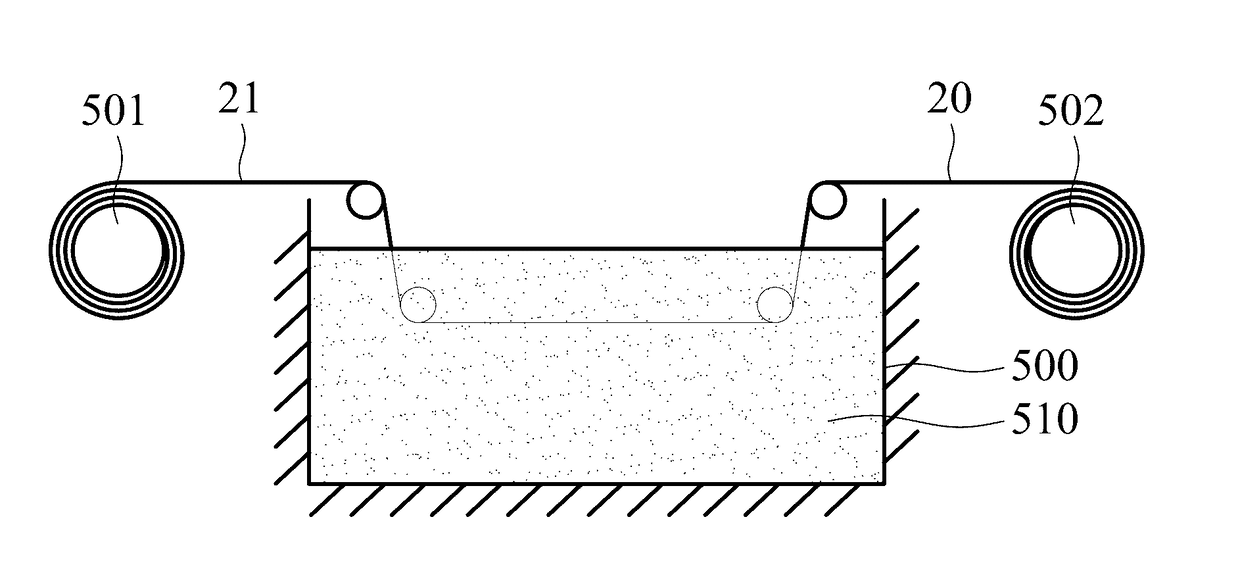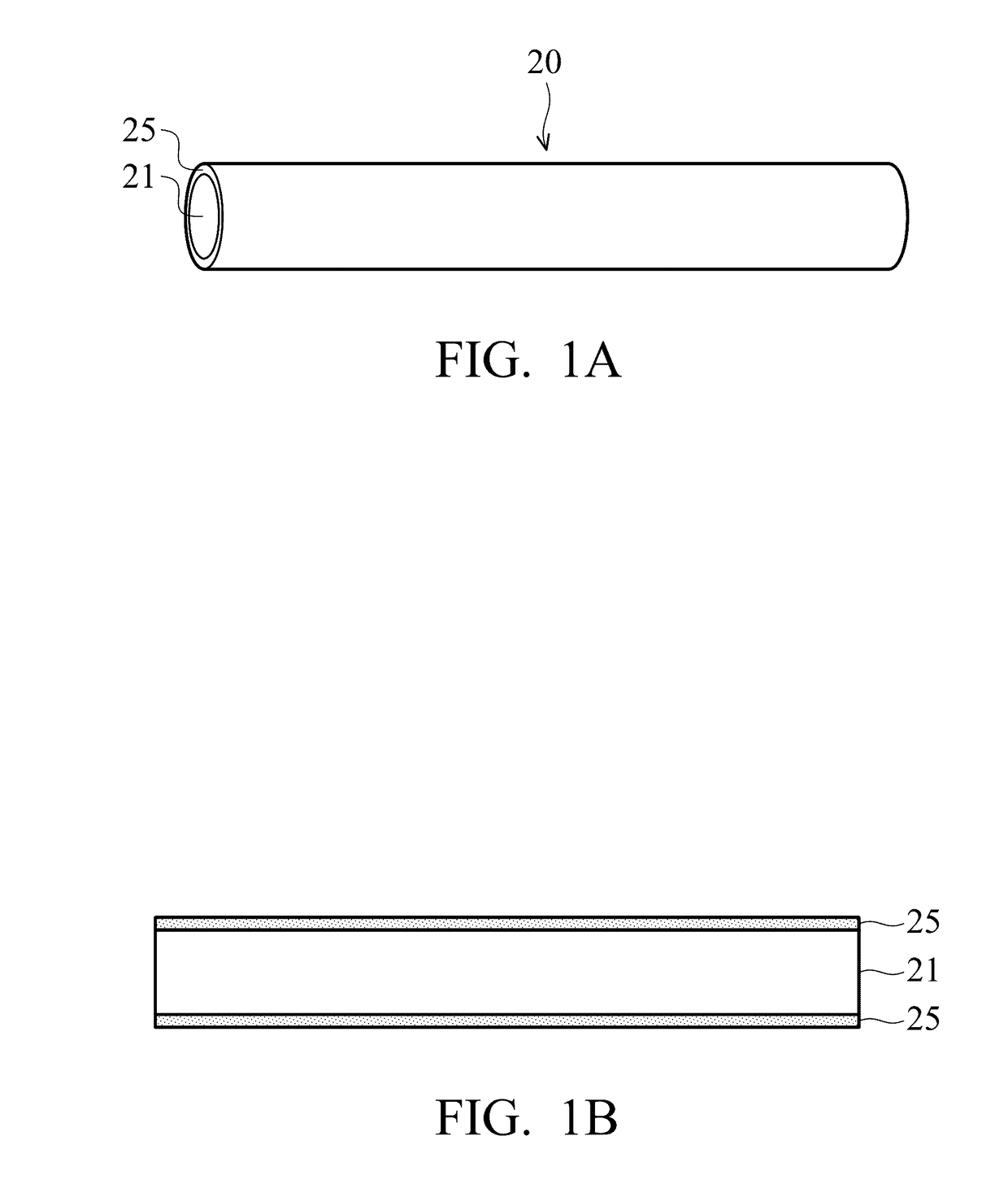Graphene coated silver alloy wire and methods for manufacturing the same
a silver alloy wire and alloy wire technology, applied in the direction of metal/alloy conductors, reducing the size of cables/conductors, and insulating conductors/cables, etc., can solve the problems of product failure, local coarse grains, and product performance degradation and/or a decrease in reliability of related products
- Summary
- Abstract
- Description
- Claims
- Application Information
AI Technical Summary
Benefits of technology
Problems solved by technology
Method used
Image
Examples
example 1
[0076]A silver-4 wt % palladium alloy was smelted by high-frequency electric smelting, followed by continuous casting to form a thick wire with a wire diameter of 6 mm. The thick wire became an initial wire with a wire diameter of 1 mm after an initial drawing step, and then it became a fine wire with a wire diameter of 17.6 μm after alternative performance of a plurality of steps including wire drawing elongation steps and annealing treatment steps, followed by the performance of the last step of the annealing treatment at an annealing temperature of 570 C for 4.8 seconds. Every step of the annealing treatment was performed at a nitrogen passive atmosphere. Completing the last step of the annealing treatment, the fine wire acted as a core wire was sent to be immersed into and passed a solution including graphene oxide with 1V bias applied, such that graphene oxide was attached to the fine wire and the attached graphene oxide was simultaneously reduced into graphene layer or layers ...
PUM
| Property | Measurement | Unit |
|---|---|---|
| Temperature | aaaaa | aaaaa |
| Temperature | aaaaa | aaaaa |
| Time | aaaaa | aaaaa |
Abstract
Description
Claims
Application Information
 Login to View More
Login to View More - R&D
- Intellectual Property
- Life Sciences
- Materials
- Tech Scout
- Unparalleled Data Quality
- Higher Quality Content
- 60% Fewer Hallucinations
Browse by: Latest US Patents, China's latest patents, Technical Efficacy Thesaurus, Application Domain, Technology Topic, Popular Technical Reports.
© 2025 PatSnap. All rights reserved.Legal|Privacy policy|Modern Slavery Act Transparency Statement|Sitemap|About US| Contact US: help@patsnap.com



